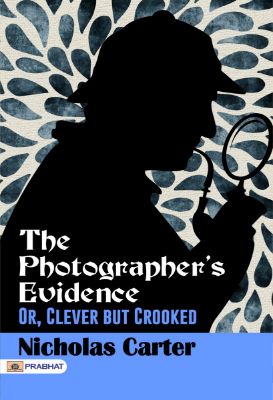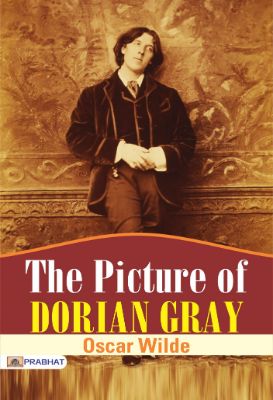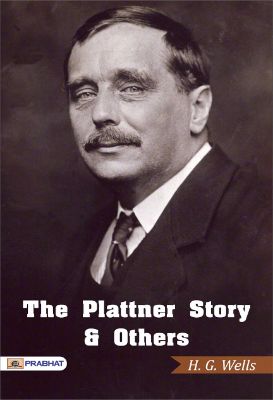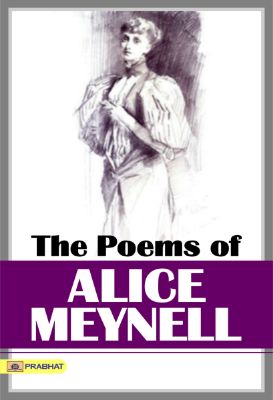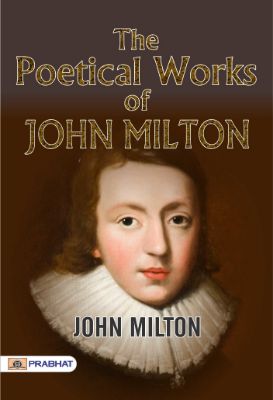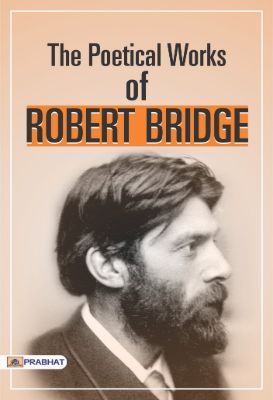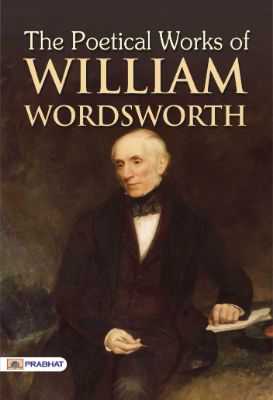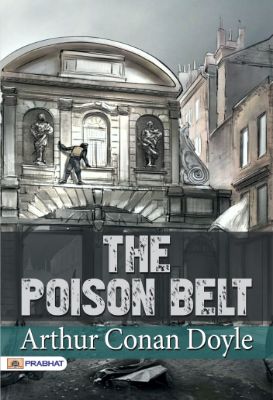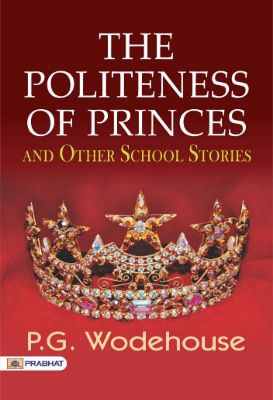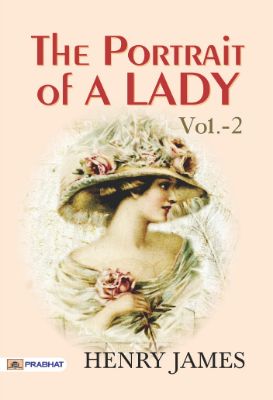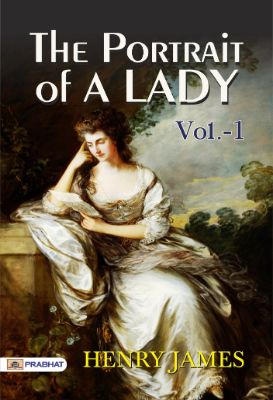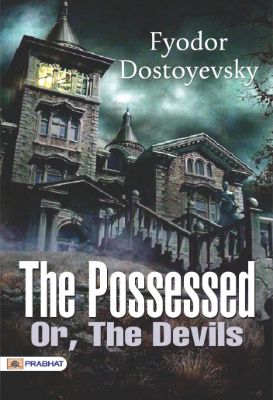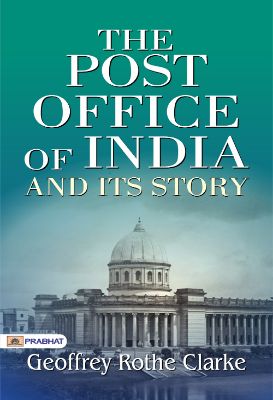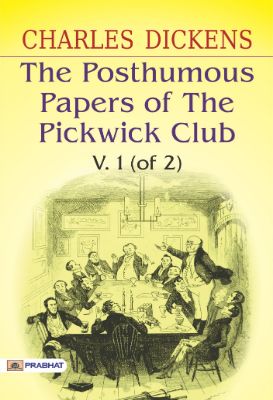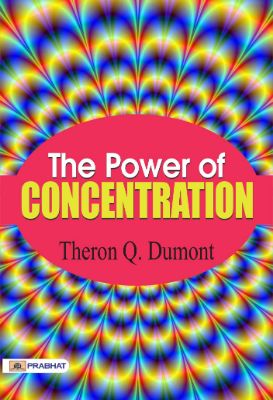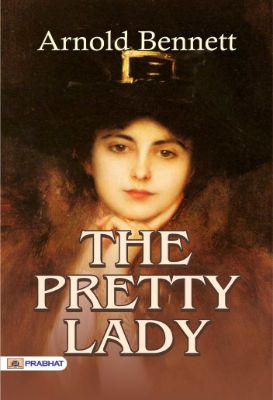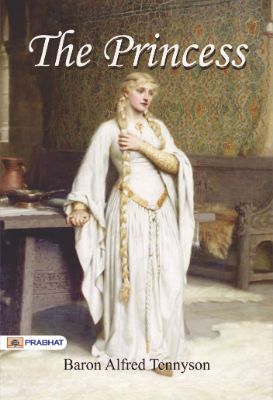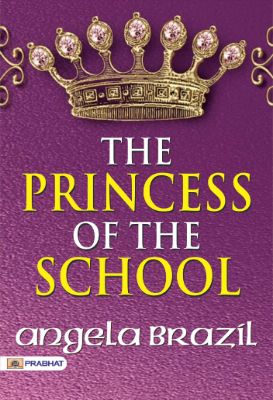Premium Books
Showing 3051–3100 of 3787 results
The Photographer’s Evidence; Or, Clever but Crooked by Nicholas Carter
“Mr. Carter, can I trust you?”
It was in the great detective’s own house that this question was asked.
“Well,” was Nick’s quiet answer, “if you had any doubt on that matter, why did you come to me?”
His caller looked nervously at the floor.
“There’s no use in talking to me,” Nick went on, “unless you do trust me. A detective can do nothing for a client who does not give him his confidence absolutely.”
“Of course,” the other assented; “I did not mean to offend you.”
“You haven’t offended me.”
“I am so disturbed by it, you see. So much depends on secrecy. It is so terribly important that I found it difficult to make up my mind to consult anybody on the matter; and yet I know by your reputation that you are a perfectly trustworthy man. There is nobody in the States more so.”
While the man was speaking Nick was studying him.
In fact, the detective had been doing that from the moment the man entered.
He was apparently about fifty years old; a well-dressed, prosperous-looking man, who might be a merchant, or a lawyer, or a banker.
The Piazza Tales by Herman Melville
First published in the year 1856, the present book ‘The Piazza Tales’ is a collection of six short stories by American writer Herman Melville. The collection includes what has long been regarded as the author’s three most important achievements in the genre of short fiction, “Bartleby, the Scrivener”, “Benito Cereno”, and “The Encantadas”, his sketches of the Galápagos Islands.
The Picaroons by Gelett Burgess and Will Irwin
A compendium of tall tales, wild adventures, and satire, ‘The Picaroons’ follows the adventures of a band of down-and-outers in San Francisco. Staked by a sympathetic cockney restaurateur named Coffee John to the most meager of working capital, each adventurer sets out to make his fortune via a get-rich-quick scheme, each more audacious than the next. This is a reproduction of a book published before 1923. We believe this work is culturally important. We appreciate your understanding and hope you enjoy this valuable book.
The Pickwick Papers by Charles Dickens
First pblished in the year 1837, the present novel ‘The Pickwick Papers’ was the famous Victorian realist novelist Charles Dickens’s first novel. It was published in the serialized form following the success of his ‘Sketches by Boz’, under his pseudonym Boz.
The Picture of Dorian Gray by Oscar Wilde
The Picture of Dorian Gray’ is a philosophical novel by Oscar Wilde, first published in the July 1890. The plot of the novel varies between each of the published versions. The summary below deals with the longest version, the 1891 novel. However, certain episodes described—in particular Dorian’s encounter with, and murder of, James Vane—do not appear in the version originally submitted by Wilde to Lippincott’s.
The Pilgrim’s Progress from this world to that which is to come by John Bunyan
The Pilgrim’s Progress From This World to That Which Is to Come’ is a 1678 Christian allegory written by John Bunyan. It is regarded as one of the most significant works of religious English literature. It has been translated into more than 200 languages, and has never been out of demand since first published.
The Pink Fairy Book by Andrew Lang
A collection of several short fairy tales by the noted Scottish poet, novelist, literary critic, and anthropologist Andrew Lang. These tales are first English translations of fairy tales from many different languages. This volume was published in a colour-coded manner with pink at the background of each of the pages. He published around 25 such volumes with different colour codes for each. These volumes got immensely popular at that pont of time.
The Pirate by Walter Scott
A historical drama novel by famous writer Sir Walter Scott, ‘The Pirate’ was first published in the year 1822. The story is based on the life of John Gow or Captain Cleveland in the novel, and is set in the southern tip of the main island of Shetland in 18th century.
The Pirate of the Mediterranean: A Tale of the Sea by William Henry Giles Kingston
Malta, which I have selected as the opening scene of the following story, is, from its historical recollections, its fine climate, and brilliant skies, a very interesting spot; although, for such beauty as its scenery possesses, it must be acknowledged that it is indebted very much more to art than to nature. Notwithstanding, however, the noise it has made in the world, and will, I suspect, should we ever be driven into a war with our vivacious continental neighbour, again make, it is but a rock some twenty miles long, and twelve broad, in the middle of the Mediterranean, with a smaller rock, Gozo, to the north of it, and was, probably, at one time of this planet’s existence, merely a continuation of Sicily or Italy’s toe, or a lump, as it were, kicked off into the middle of the sea. If, also, report speaks true, the very soil which gives verdure to its valleys, and nourishes its sweet-scented orange-groves, was imported from richer lands; yet, notwithstanding this, a larger number of inhabitants of every religion, colour, and costume, continue to exist on its surface, than on any similar-sized portion of the globe. But in its capital, Valetta, with its magnificent fortifications, and superb harbour, are centred its chief attractions, and which have gained for it a name imperishable on the page of history as the bulwark of Christendom, against the pagan hosts of the Saracens.
The Pirate Woman by Aylward Edward Dingle
First published in the year 1928, the present novel ‘The Pirate Woman’ is a fictional romantic-adventure novel by one of the most acclaimed writers Aylward Edward Dingle. This novel is an unique, on of its kind, fiction which depicts a ferocious Pirate woman as the main character of it.
The Pirates of Panama by A. O. Exquemelin
This volume was originally written in Dutch by John Esquemeling, and first published in Amsterdam in 1678 under the title of De Americaeneche Zee Roovers. It immediately became very popular and this first hand history of the Buccaneers of America was soon translated into the principal European languages. The first English edition was printed in 1684.
The Pivot of Civilization by Margaret Sanger
First published in the year 1922, the present book ‘The Pivot of Civilization’ is written by the famous writer, historian Margaret Sanger. As evident from its title, it consists an analysis of the history of the civilization.
The Plattner Story, and Others by H. G. Wells
First published in the year 1897, ‘The Plattner Story, and Others’ is a collection of H. G. Wells’s seventeen short stories. The theme that prevails in these stories is science and fantasy.
The Playboy of the Western World: A Comedy in Three Acts by J. M. Synge
First published in the year 1907, the present book ‘The Playboy of the Western World: A Comedy in Three Acts’ is a play by an irish playwright J. M. Synge. This play became controversial with its first staging as it questions the Irish morales. This resulted in riots in Dublin in 1907.
The Poems of Alice Meynell by Alice Meynell
O Spring, I know thee! Seek for sweet surprise
In the young children’s eyes.
But I have learnt the years, and know the yet
Leaf-folded violet.
Mine ear, awake to silence, can foretell
The cuckoo’s fitful bell.
I wander in a grey time that encloses
June and the wild hedge-roses.
A year’s procession of the flowers doth pass
My feet, along the grass.
And all you wild birds silent yet, I know
The notes that stir you so,
Your songs yet half devised in the dim dear
Beginnings of the year.
In these young days you meditate your part;
I have it all by heart.
I know the secrets of the seeds of flowers
Hidden and warm with showers,
And how, in kindling Spring, the cuckoo shall
Alter his interval.
But not a flower or song I ponder is
My own, but memory’s.
I shall be silent in those days desired
Before world inspired.
The Poems of Jonathan Swift, D.D., Volume 1 by Jonathan Swift
The present book is a collection of poetic works of the noted Anglo-Irish satirist, essayist, political pamphleteer, and poet – Jonathan Swift.
The Poetical Works of John Milton by John Milton
“This edition of Milton’s Poetry is a reprint, as careful as Editor and Printers have been able to make it, from the earliest printed copies of the several poems. First the 1645 volume of the Minor Poems has been printed entire; then follow in order the poems added in the reissue of 1673; the Paradise Lost, from the edition of 1667; and the Paradise Regain’d and Samson Agonistes from the edition of 1671.” -Preface
The Poetical Works of Robert Bridges by Robert Bridges
The present book ‘The Poetical Works of Robert Bridges’ is a collection of all of the poetical works of the famous poet Robert Bridges, who was Britain’s poet laureate from 1913 to 1930. This collection was first published in the year 1912.
The Poetical Works of William Wordsworth by William Wordsworth
This is an exact reproduction of a book published before 1923. Quality assurance was conducted in an attempt to remove book with imperfections introduced by the digitization process. We believe this work is culturally important and have elected to bring it back into print as part of our continuing commitment to the preservation of printed works worldwide. We appreciate your understanding of the imperfections in the preservation process, and hope you enjoy this valuable book.
The Poetics of Aristotle by Aristotle
is the earliest surviving work of dramatic theory and the first extant philosophical treatise to focus on literary theory. This has been the traditional view for centuries. However, recent work is now challenging whether Aristotle focuses on literary theory per se (given that not one poem exists in the treatise) or whether he focuses instead on dramatic musical theory that only has language as one of the elements.
The Poison Belt by Arthur Conan Doyle
The Poison Belt’ was the second novel that Sir Arthur Conan Doyle wrote about Professor Challenger. It was first published in the year 1913.
The Politeness of Princes, and Other School Stories by P. G. Wodehouse
Thus it happened that Chapple, having finished an excellent breakfast one morning some twenty minutes after everybody else, was informed as he sat in the junior day-room trying, with the help of an illustrated article in a boys’ paper, to construct a handy model steam-engine out of a reel of cotton and an old note-book—for his was in many ways a giant brain—that Mr. Seymour would like to have a friendly chat with him in his study. Laying aside his handy model steam-engine, he went off to the housemaster’s study.
The Portrait of a Lady — Volume 1 by Henry James
The Portrait of a Lady is the story of a beautiful, strong-willed young American woman, Isabel Archer, who upon her father’s death is brought to Europe by her wealthy aunt Mrs. Touchett. it is assumed that Isabela will soon marry, but instead the penniless girl inherits a large amount of money and chooses to enjoy her freedom. She turns down two eligible suitors but eventually gets drawn to Gilbert Osmond. Osmond is cultured, charming and a fortune hunter and sees Isabella as a trophy to be coveted. Would Isabella leave Osmond on realizing his decadence or would she succumb to her destiny.
The Portrait of a Lady — Volume 2 by Henry James
The Portrait of a Lady is regarded as Henry James’s finest work of psychological realism. the novel is an eloquent work of literature realizing the distance between happiness and money.
The Portrait of a Lady is the story of a beautiful, strong-willed young American woman, Isabel Archer, who upon her father’s death is brought to Europe by her wealthy aunt Mrs. Touchett. it is assumed that Isabela will soon marry, but instead the penniless girl inherits a large amount of money and chooses to enjoy her freedom. She turns down two eligible suitors but eventually gets drawn to Gilbert Osmond.
The Possessed by Fyodor Dostoyevsky
The Possessed or, The Devils by Fyodor Dostoyevsky, first published in the journal The Russian Messenger in 1871–2
The Post Office by Rabindranath Tagore
The Post office is a story of an eight-year-old boy who is terminally ill and is confined inside his house by the family physician. He sees the outside world only through his window. He talks to the passers-by and engages them in eager conversations. Flower seller’s daughter Sudha has made a promise of bringing flowers for him. Watchman tells him that the big building with the flag is the king’s new Post office. He imagines that he will receive a letter from the King and based on that he constructs an imaginary world for himself. He dreams of being the royal postman and awaits the king’s visit.
The Post Office of India and its story by Geoffrey Rothe Clarke
When I first decided to write a short account of the Post Office of India my intention was to close my story with the amalgamation of the Post Office and the Telegraph Department, which took place in 1913. Publication has been delayed for various reasons, chiefly owing to the outbreak of the war in 1914, and since then many strange things have happened. Consequently I have had to revise several chapters and felt compelled to write one upon the wonderful work done by the Indian Post Office in the Great War. I have also brought the statistical information up to the year 1918. Much of the matter referring to the early posts in India has already been given in Mr. Hamilton’s book, An Outline of Postal History and Practice. This is only natural, as we have both drawn from the same sources—namely, the records of the Postal Directorate in Calcutta. I have tried to tell the story of the Post Office in such a way as to be interesting to the general reader as well as useful to the student. The ordinary routine of post office work is not exciting, but the effect of the work, the benefits it confers, the dependence of the public upon its proper execution, are themes to inspire the pen of a romantic writer. “The Romance of the Post Office” was the title of a delightful article in Blackwood’s Magazine by Sir Arthur Fanshawe, late Director-General of the Department, and to this article I must acknowledge my obligations for several passages in the book.
The Posthumous Papers of the Pickwick Club, v. 1 (of 2) by Charles Dickens
The first ray of light which illumines the gloom, and converts into a dazzling brilliancy that obscurity in which the earlier history of the public career of the immortal Pickwick would appear to be involved, is derived from the perusal of the following entry in the Transactions of the Pickwick Club, which the editor of these papers feels the highest pleasure in laying before his readers, as a proof of the careful attention, indefatigable assiduity, and nice discrimination, with which his search among the multifarious documents confided to him has been conducted.
The Pothunters by P. G. Wodehouse
t was at Aldershot—to be more exact, in the dressing-room of the Queen’s Avenue Gymnasium at Aldershot—that the conversation took place. From east and west, and north and south, from Dan even unto Beersheba, the representatives of the public schools had assembled to box, fence, and perform gymnastic prodigies for fame and silver medals.
The Power of a Lie by Johan Bojer
THIS is a great book. I can have no hesitation whatever in saying that. Rarely in reading a modern novel have I felt so strong a sense of reality and so deep an impression of motive. It would be difficult to praise too highly the power and the reticence of this story.
When I compare it with other Norwegian novels, even the best and by the best-known writers, I feel that it transcends them in its high seriousness, and in the almost relentless strength with which its dominant idea is carried through. Its atmosphere is often wonderful, sometimes startling, and its structure is without any fault that has betrayed itself to me.
Of isolated scenes of beauty and pathos it has not a few, and its closeness to nature in little things fills its pages with surprises. All its characters bear the stamp of truth, and some of them are deeply impressive, especially, perhaps, that of Fru Wangen, a tragic figure of a woman, never to be forgotten as long as memory lasts.
The Power of Awareness by Neville Goddard
The “Light” is consciousness. Consciousness is one, manifesting in legions of forms or levels of consciousness.
There is no one that is not all that is, for consciousness, though expressed in an infinite series of levels, is not divisional. There is no real separation or gap in consciousness. I AM cannot be divided. I may conceive myself to be a rich man, a poor man, a beggar man or a thief, but the center of my being remains the same, regardless of the concept I hold of myself. At the center of manifestation, there is only one I AM manifesting in legions of forms or concepts of itself and “I am that I am”.
The Power of Concentration by Theron Q. Dumont
Concentration is the key to accomplishment. Everyone know this, but how easy or hard is to have concentration on least or high priority things we do in our lives leading to success? This book is one of the most powerful self-help books which engages the reader to the extent where one starts followng the tips right away.
Theron Q. Dumont, whose real name was William Walker Atkinson, was a very important and influential figure in the early days of the New Thought Movement. Little is known about his early years, except that he was born in Baltimore, Maryland on December 5, 1862, to William and Emma Atkinson, both of whom were born in Maryland also.
The Power of Mesmerism by Anonymous
Anonymously written in the year 1891, ‘The Power of Mesmerism’ is a classic Victorian erotic novel. It has grave sexual descriptions of fantasy. A remarkable work in this genre.
The Power-House by John Buchan
We were at Glenaicill—six of us—for the duck-shooting, when Leithen told us this story. Since five in the morning we had been out on the skerries, and had been blown home by a wind which threatened to root the house and its wind-blown woods from their precarious lodgment on the hill. A vast nondescript meal, luncheon and dinner in one, had occupied us till the last daylight departed, and we settled ourselves in the smoking-room for a sleepy evening of talk and tobacco.
The Practice and Science of Drawing by Harold Speed
Much of the learning to practice as well as to appreciate art is concerned with understanding the basic principles. One of these principles is what Harold Speed calls “dither,” the freedom that allows realism and the artistic vision to play against each other.
The Practice and Theory of Bolshevism by Bertrand Russell
This work has been selected by scholars as being culturally important, and is part of the knowledge base of civilization as we know it.
The Pretty Lady by Arnold Bennett
First published in the year 1918, Arnold Bennett’s ‘The Pretty Lady’ is a fascinating novel. This novel gives a glimpse of the gender and class issues at the dawn of the twentieth century in Europe. Switching between the perspectives of two distinct narrators, this is a closely observed portrait of a turbulent time, much in the same line as most of the modernist novelists in Britain at that point of time.
The Price of Love by Arnold Bennett
A tragic story of a young girl Rachel Louisa Fleckring, ‘The Price of Love’ is about her falling in love and losing something of utmost importance to retain that love in her life. What Anna would do now, read in this engaging and paced novel by famous writer Arnold Bennett.
The Prime Minister by William Henry Giles Kingston
Having resolved to employ myself, during a prolonged residence in Portugal, in writing some work of fiction on that country, it struck me that the Times of the Marquis of Pombal would afford a good subject, untouched, as it is, by any other author. For a considerable time I delayed commencing my undertaking, almost in despair of finding the necessary materials. I wrote frequently to Lisbon to procure information, and mentioned my purpose to several Portuguese friends, who, at length, put at my disposal all the documents they possess relating to the private history of their families. From them I have composed the following work.
The Prince and the Pauper by Mark Twain
First published in the year 1881, the present book ‘The Prince and the Pauper’ was written by famous American writer, humorist, entrepreneur, publisher, and lecturer – Mark Twain. This historical novel is set in year 1547. It tells the story of two young boys who are identical in appearance: Tom Canty, a pauper who lives with his abusive father in Offal Court off Pudding Lane in London, and Prince Edward, son of King Henry VIII.
The Prince by Niccolò Machiavelli
The Prince is a 16th-century political treatise, by the Italian diplomat and political theorist, Niccolò Machiavelli.
The Princess Aline by Richard Harding Davis
“H. R. H. the Princess Aline of Hohenwald came into the life of Morton Carlton–or “Morney” Carlton, as men called him–of New York city, when that young gentleman’s affairs and affections were best suited to receive her. Had she made her appearance three years sooner or three years later, it is quite probable that she would have passed on out of his life with no more recognition from him than would have been expressed in a look of admiring curiosity.” -an excerpt
The Princess by Baron Alfred Tennyson
The Princess is a serio-comic blank verse narrative poem, written by Alfred Tennyson, published in 1847. Tennyson was Poet Laureate of the United Kingdom from 1850 to 1892 and remains one of the most popular English poets
The Princess of the School by Angela Brazil
On a certain morning, just a week before[1] Christmas, the little world of school at Chilcombe Hall was awake and stirring at an unusually early hour. Long before the slightest hint of dawn showed in the sky the lamps were lighted in the corridors, maids were scuttling about, bringing in breakfast, and Jones, the gardener, assisted by his eldest boy, a sturdy grinning urchin of twelve, was beginning the process of carrying down piles of hand-bags and hold-alls, and stacking them on a cart which was waiting in the drive outside.
The Principles of Chemistry, Volume I by Dmitry Ivanovich Mendeleyev
First published in the year 1897 in English, the present book ‘The Principles of Chemistry, Volume I’ by Russian science scholar Dmitry Ivanovich Mendeleyev was originally written in Russian. This book offers a detailed study of the grassroot principles of Chemistry i.e., the science of chemicals, drugs and reactants.
The Principles of Chemistry, Volume II by Dmitry Ivanovich Mendeleyev
First published in the year 1897 in English, the present book ‘The Principles of Chemistry, Volume I’ by Russian science scholar Dmitry Ivanovich Mendeleyev was originally written in Russian. This book offers a detailed study of the grassroot principles of Chemistry i.e., the science of chemicals, drugs and reactants.
The Principles of Scientific Managemen by Frederick Winslow Taylor
The Principles of Scientific Management is a monograph This influential monograph, which laid out the principles of scientific management, is a seminal text of modern organization and decision theory and has motivated administrators and students of managerial technique. Taylor was an American manufacturing manager, mechanical engineer, and then a management consultant in his later years. He is often called “The Father of Scientific Management”. His approach is also often referred to as Taylor’s Principles
The Prisoner of Zenda by Anthony Hope
A turning point in the history of European literature, ‘The Prisoner of Zenda’ is one such fabulous work of Anthonu Hope which inspired an entire new genre in literature – Ruritanian Romance. Published in 1894, this is an adventure novel in which the King of Ruritania is drugged on the eve of his coronation and thus, is unable to attend the ceremony. Political forces within the realm are such that, in order for the king to retain the crown, his coronation must proceed. Fortuitously, an English gentleman on holiday in Ruritania, who resembles the monarch, is persuaded to act as his political decoy in an effort to save the unstable political situation of the interregnum.
The Private Life of Helen of Troy by John Erskine
An adaptation of Greek epic ‘Lliad’, ‘The Private Life of Helen of Troy’ is a depiction of the female protagonist Helen’s private life by American educator and author John Erskine.
The Private Papers of Henry Ryecroft by George Gissing
First published in the year 1903, the present novel ‘The Private Papers of Henry Ryecroft’ is George Gissing’s semi-autobiographical work in which the author casts himself as the editor of the diary of a deceased acquaintance, selecting essays for posthumous publication.


